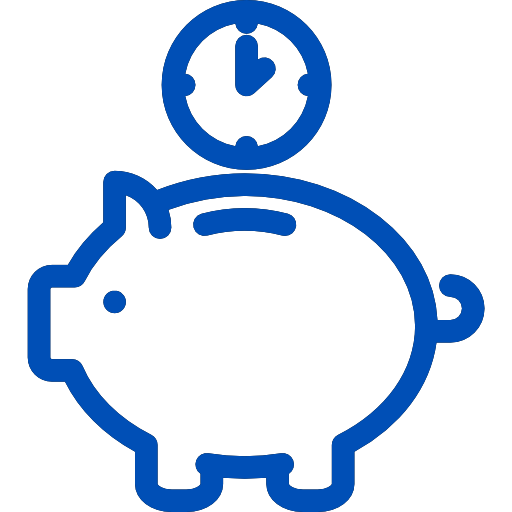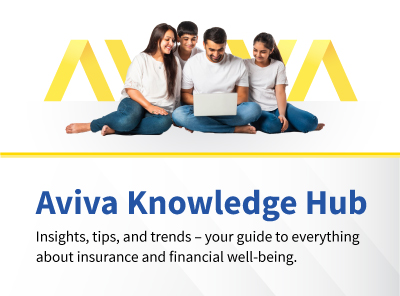How to Choose the Right Term Plan in Your 30's

We always want the best for our family, don’t we? While you can give them the world when you are around, have you ensured their comfort even when you maybe aren’t?
When you reach your 30s, life changes. Your priorities and concerns shift from your own to that of your family. And when you have lives that depend on you, it is important to ensure their well-being and financial security. So that when uncertainties knock at your door, you are prepared. As their backbone, the responsibility to protect them is yours.
The first step towards fulfilling that responsibility is investing in Term Insurance Plan. A term plan or an insurance plan is the simplest way to secure your future and that of your loved ones. In case of death or any unfortunate event, your family will receive an assured sum of money. For this, you will have to pay a certain amount as a premium on a monthly or yearly basis. That's all. A nominal amount every month can tide you comfortably over any unforeseeable tragedy you might face.
Reasons To Buy Term Insurance in Your 30s
Here are some simple and strong reasons to buy term insurance in your 30s:
1. Lower Premiums: The earlier you buy, the lower the premium. In your 30s, you're likely healthier, so you get better rates.
2. Family Protection: You may have dependents like a spouse, children, or aging parents. Term insurance ensures their financial security in your absence.
3. Growing Financial Responsibilities: You might be paying off loans (home, car, education) or planning your child’s future. Insurance can cover these liabilities.
4. Long-Term Coverage: Buying early ensures you stay covered for a longer period, like up to age 65 or 70.
5. Peace of Mind: It gives you confidence that your loved ones won’t face financial hardship if something happens to you.
6. Helps in Financial Planning: Term insurance is a key part of a sound financial plan, especially as your responsibilities grow in your 30s.
7. Tax Benefits: Premiums paid qualify for tax deductions under Section 80C, and the death benefit is tax-free under Section 10(10D).
8. Customisable Riders: You can tailor your policy and opt for add-ons or riders like critical illness, accidental death.
9. Terminal Illness Coverage: Many term plans even offer early payouts if diagnosed with a terminal illness.
10. Debt Replacement: Some term plans can be used to pay off outstanding debts for home or car loan, preventing the risk of financial hardship.
Buying in your 30s is smart—it’s cost-effective and ensures protection during your most financially active years.
Things to Consider Before Buying Term Insurance in Your 30s
Before you decide on a term plan, you should consider a host of factors. Your term plan should be reflective of your lifestyle, age, liabilities, and health. When exploring term life insurance in your 30s, it's important to choose a plan that aligns with your current and future financial responsibilities. Here are a few key things you should consider while selecting the ideal plan:
Determine your need
Your family is special, and so is every individual in your kin. Your school-going kid will have wants that are different from your toddler who has just started walking. Your cover amount should not be based on your income, but basis your family’s expenditure and bills.
The entire idea behind insuring your loved ones is to make sure that they do not have to give up on any needs or wants, even if you are not around. The cover amount, therefore, should factor in your family’s current lifestyle and your existing liabilities, like loan EMI’s, if any.
Many financial experts suggest that a term plan with a life cover of approximately 20 times your annual income is ideal.
Also Read: 1 Crore Term Insurance Plans
Consider Inflation
You may have amassed a very sound corpus for your future, but what if it is not enough? Say, you brought a cover of Rs 60 lakhs. About 20 years down the line, it will have reduced in its value in terms of your purchasing power.
Why? Inflation.
Assuming an inflation rate of 5%, the value of Rs 60 lakhs will be reduced to about Rs 22 lakhs in this time span. Inflation erodes the value of money over time and causes the prices of products to rise. Hence, 20 years from now, not only is it a definitive reality that your costs are going to rise, but also that if you don’t know this, you probably won't have enough saved to cover them.
There’s no need to panic of course, just that while purchasing a term plan, always factor in inflation. Choose a term plan that keeps pace with inflation by offering periodic hikes. This will help you stay worry-free about any inflationary trends eating into your future foundations.
Determine a time period for your plan
Sit back. Enjoy life. Don’t work after 50 if you don’t want to. Or work super hard and clock in till 70. Your choice!
In your 30s, you have an idea of where you are headed in life. This clarity should reflect in your term plan duration, too. The duration for which you choose to invest in the plan is extremely important. Many experts suggest that the ideal policy tenure is the difference between your assumed retirement age and your current age. So, if you are 35 today and wish to retire at the age of 65, your policy tenure should be 30 years.
Also, the earlier you buy your plan, the lower premiums you pay. As you grow older, the premiums payable rise, too. So, try and get a policy as soon as possible! Get a quote and see how much is the premium calculation working out for you.
Also Read: Term Insurance Riders
Do a Cost-Benefit Analysis
Your term plan might look extremely costly to you today with its hefty monthly premiums. So make sure it’s worth it. Ask yourselves the following questions - does it cover for inflation? Would it provide decent cover in case of a tragedy? Does it provide additional covers for accidents and illnesses?
Also, consider the claim settlement ratio of the organization you choose to buy your term policy from. The claim settlement ratio of a company indicates the number of policies that have been successfully settled in case of deaths. Ideally, a company settling 98-99 claims out of every 100 claims each year is the best one. Choose carefully before you buy your plan.
Account for diseases and Illnesses
While buying a term plan, account for all possible scenarios, such as critical illnesses, disability, or employment loss, among others. Your foresight while purchasing a term plan may actually save you from living such a reality. By paying a small, additional amount, you can add riders or benefits to your plan that can protect from such tragedies. They add value to your plan by covering major life mishaps apart from death.
Don’t worry if this sounds too complicated - speak to your insurance provider and allow them to walk you through this important decision. Your wisdom today can help your family in your absence tomorrow. Let the unpredictabilities of life not bog you down! Purchase a plan today and take a step to secure your loved ones’ future.
FAQs on Term Insurance Plan in 30s
1. How much coverage is ideal for term insurance in your 30s?
The ideal term insurance coverage in your 30s depends on your income, financial responsibilities, and future goals. A common rule of thumb is to have coverage that is 10 to 15 times your annual income For example, if you earn ₹10 lakhs per year, you may need a cover of ₹1 to ₹1.5 crore. However, this can vary based on factors like existing loans (such as a home loan), dependents (like a spouse, children, or elderly parents), and future expenses (such as children’s education or marriage). It’s also important to consider inflation and choose a cover that will adequately protect your family’s lifestyle over the long term. Using tools like Human Life Value (HLV) calculators can help estimate the right amount.
2. What are the benefits of purchasing term insurance early in your 30s?
Purchasing term insurance early in your 30s offers several key benefits. The most significant advantage is lower premiums, as insurance costs are directly linked to age and health—meaning you lock in a low rate for a long duration. At this stage, you're likely to be in good health, which makes it easier to get higher coverage without medical complications. Additionally, buying early ensures that your growing financial responsibilities, such as home loans, children’s education, or dependent care, are protected. It also gives you peace of mind and strengthens your long-term financial planning by securing your family’s future against unforeseen events.
3. Can you buy riders with a term insurance plan in your 30s?
Yes, you can buy riders with a term insurance plan in your 30s, and it is often a smart decision. Riders are optional add-ons that enhance the base coverage of your term plan by offering protection against specific risks. Adding riders in your 30s is usually more affordable, and it helps you customize your policy based on your lifestyle, health risks, and financial goals. By including relevant riders early on, you can strengthen your insurance coverage and ensure more comprehensive protection for yourself and your family.
4. What is the recommended policy term for term insurance in your 30s
The recommended policy term for term insurance in your 30s is typically up to retirement age, which is around 60 to 65 years. Choosing a longer policy term—such as 30 to 35 years—ensures that your family is protected during the most financially active years of your life, when you may have ongoing responsibilities like loan repayments, children's education, and daily living expenses. A longer duration also locks in low premiums at a young age, offering cost-effective coverage for a longer period. Some people even opt for coverage up to age 70 to ensure extended protection, depending on their financial plans and dependents.
Related Articles:
Quick Tips: Early Financial Planning for Beginners
Who Should be the Nominee for Your Term Insurance?
How to find a Term Insurance with Adequate Sum Assured and Less Premium?
Feb 52/19
Popular Searches
- Term Insurance Plan
- Term Insurance Age Limit
- Term Insurance with Maturity Benefit
- Term Plan in your 30s
- Term Plan Benefits
- Zero Cost Term Insurance
- Ideal Coverage Amount for Term Insurance
- Term Insurance Riders
- What is Term Insurance
- Types of Life Insurance
- Term Insurance with Return of Premium
- Group Life Insurance
- Saral Jeevan Bima
- Life Insurance Plans
- Benefits of Life Insurance
- Life insurance vs Health Insurance
- Life Insurance vs Annuity
- Types of Life Insurance
- What is Life Insurance
- Sum Assured
- Endowment Plans
- Health Insurance Plans
- Cancer Insurance
- Child Insurance Plans
- Cash Value Life Insurance
- Savings Plan
- Guaranteed Savings Plan
- Short Term Investment Plans
- Pension Plans in India
- ULIP Plan
- ULIP Meaning
- ULIP and Riders Options
- ULIP Plan Tax Benefit
- ULIP Benefits
- What is Annuity
 :
:  :
: 



